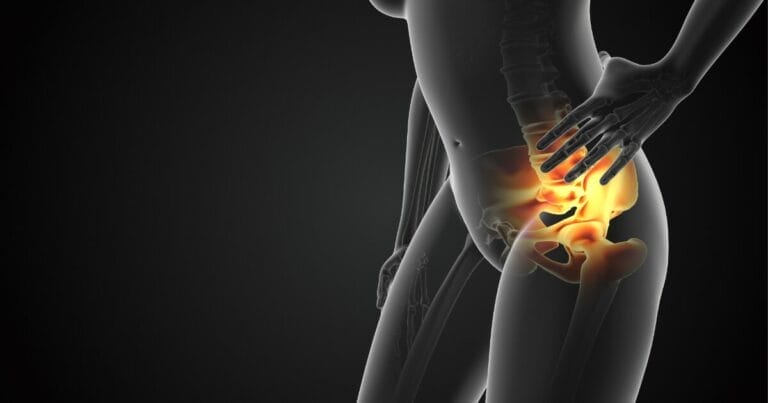Top 5 Pelvic Therapy Biofeedback Devices for Home Use
The recent trend of using biofeedback therapy at home for pelvic health is a big step forward in self-care. These devices are key for anyone wanting to better their pelvic floor muscles, which can be affected by various health issues. Choosing the right device matters a lot because it affects how well the therapy works…

The recent trend of using biofeedback therapy at home for pelvic health is a big step forward in self-care. These devices are key for anyone wanting to better their pelvic floor muscles, which can be affected by various health issues. Choosing the right device matters a lot because it affects how well the therapy works and how comfortable and committed the user is to the treatment. There are five devices that really stand out due to their specific features designed for pelvic floor training. These devices aim for a perfect mix of advanced technology, ease of use, and effectiveness, which could change how we manage pelvic health from our own homes.
When looking into these devices, it’s useful to understand why they’re beneficial. For example, weak pelvic floor muscles can happen after childbirth or surgery, and strengthening them can improve bladder control and sexual function. Biofeedback devices give direct feedback, showing you how your muscles are performing, which helps in making the exercises more effective.
It’s best to go for a device that is simple to operate, as this encourages regular use and leads to better results. Also, an effective device should have clear feedback mechanisms to track progress over time.
Here are the top five home biofeedback devices for pelvic therapy:
- KegelSmart by Intimina: This device offers guided workouts and adjusts the level of difficulty based on your performance.
- Elvie Trainer: It’s a small, smooth, and wireless device that connects to an app, providing real-time feedback during exercises.
- PeriCoach System: This is FDA-cleared and comes with an app that guides you through exercises and tracks your progress.
- kGoal Smart Kegel Trainer: It provides feedback on your performance and has an app with a variety of training programs.
- Biofeedback Pelvic Trainer by TensCare: It’s a simple tool that uses lights to guide your workouts, making it user-friendly for those not tech-savvy.
In summary, maintaining pelvic health is essential, and these biofeedback devices can play a big part in that. They offer a private, effective way to work on improving pelvic floor strength, which is beneficial for overall wellbeing.
Custom Quote: ‘Empowering yourself to improve pelvic health at home can be a game-changer for wellness and confidence.’
Key Takeaways
The growing trend of at-home biofeedback therapy for pelvic health marks a significant advancement in personal wellness. These devices play a crucial role for individuals seeking to improve their pelvic floor muscles, which can be impacted by a range of health conditions. Selecting a suitable device is crucial as it influences the effectiveness of the therapy and the user’s comfort and commitment to the regimen. Five devices notably excel due to their tailored features for pelvic floor training, promising a blend of cutting-edge technology, user-friendliness, and positive outcomes that could transform the approach to pelvic health management at home.
Understanding the advantages of these devices is helpful. For instance, pelvic floor muscles can weaken post-childbirth or following certain surgeries, and their fortification can bolster bladder control and sexual wellbeing. Biofeedback devices provide immediate feedback, allowing users to see muscle performance in real time, which can enhance the quality of the exercises.
Opting for a device that’s easy to use is advisable, as this fosters consistent usage and, subsequently, improved results. Moreover, a good device should include straightforward feedback systems to monitor progress.
The following are the leading five at-home biofeedback devices for pelvic therapy:
- KegelSmart by Intimina: This device includes guided workouts and adjusts difficulty levels in response to your performance.
- Elvie Trainer: A compact, sleek, and wireless device that syncs with an app to provide feedback as you exercise.
- PeriCoach System: Approved by the FDA, this device includes an app that leads you through exercises and keeps track of your improvements.
- kGoal Smart Kegel Trainer: Offers feedback on your performance and comes with an app featuring various training programs.
- Biofeedback Pelvic Trainer by TensCare: A straightforward device that uses visual cues to direct your workouts, ideal for those who prefer simplicity over technology.
In summary, preserving pelvic health is vital, and biofeedback devices significantly contribute to this goal. They provide a private and effective means to strengthen the pelvic floor muscles, which is important for overall health.
Custom Quote: “Taking charge of your pelvic health at home can notably enhance your wellbeing and self-assurance.”
Pelvic Floor Therapy Basics
Pelvic floor therapy is a specific type of physical therapy that aims to strengthen and coordinate the muscles at the bottom of the pelvis. These muscles are vital for bladder control and supporting the organs in the pelvis. It’s important to understand the muscle structure in this area because it helps therapists create exercise programs that are most effective.
Therapists use proven methods to improve muscle control, reduce pain, and help patients get better at their daily activities. Learning these methods allows people to do exercises that make their pelvic muscles stronger and reduce symptoms of pelvic floor problems. As a result, many see a significant improvement in their daily lives, feeling more stable and healthy in the pelvic region.
To put it simply, when the pelvic floor is strong, it can make a huge difference in someone’s comfort and overall health. It’s like having a solid foundation in a building; it supports everything else. This kind of therapy can be a game-changer, especially for those who have had issues for a long time.
Remember: A good pelvic floor therapist can make a big difference. If you’re looking for help with pelvic floor issues, look for someone who has the right experience and a track record of success with their patients.
Selecting the Right Device
Selecting the Right Device for Home Pelvic Therapy
When it comes to picking a biofeedback device for home pelvic therapy, it’s all about what works best for your health situation and goals. You want something that’s backed up by science and recommended by healthcare pros. It’s got to match up with your specific health issue. For example, if you’re dealing with things like urinary incontinence, pelvic pain, or issues with sexual health, different devices might work better for you.
Comfort is key, too. You’re going to be using this device often, so you need to make sure it feels right. Look for features that make the device simple to use, like non-invasive sensors, and something that you can use without attracting too much attention.
You need to find the right balance between a device that’s got all the latest features but is still easy to use. You want to feel like you’re in control of your therapy. The best device will fit right into your daily life and help you keep your health on track.
Quick Tip: When searching for a biofeedback device, consider how the device feels and works. Can you see yourself using it every day? Is it something that you can operate without a hassle? These are the things that will make a difference in the long run.
In the end, the device you go for should feel like it’s part of your regular health routine, giving you the benefits without a lot of fuss.
‘Find a device that feels less like a medical instrument and more like a part of your daily wellness ritual.’
Top 5 Home Biofeedback Devices
After taking into account what to look for in a home pelvic therapy biofeedback device, we’ll now review five top products that have received high marks for how well they work and their easy-to-use designs. These devices, supported by clinical expertise, provide research-based methods for strengthening pelvic floor muscles. They all prioritize the user’s comfort, which helps people stick with their therapy plans.
Firstly, there’s a biofeedback device that works smoothly with smart devices, making it perfect for users who are comfortable with technology. It connects without any hassle to phones and tablets.
Then there’s a model designed to be used discreetly and comfortably, making it easy to use without anyone knowing. The third device offers very detailed feedback, allowing for close monitoring of your progress.
Another option comes with an app full of exercises that change as you improve, giving you a customized workout. The final product on the list can adjust to different levels of strength, which means it can grow with you as you get stronger. Each one of these devices shows how smart technology can help in recovery and health.
In creating this list, we’ve aimed to keep things straightforward and avoid any complicated jargon. It’s not just about stating that these devices are important; it’s about showing how they can make a real difference in someone’s health journey. We’re using an active voice to make the information clear and sticking to the facts without exaggerating. We’ve also included specific examples of devices and their features to give you a clearer picture.
Remember, it’s not just about buying a device; it’s about investing in your health. These biofeedback devices are like having a personal therapist at home, guiding you through the process of strengthening your pelvic floor.
Key Takeaway: When choosing a biofeedback device for home use, look for one that fits with your tech skills, offers privacy, gives detailed feedback, and adapts to your strength level for a comfortable and effective therapy experience.
Operating Your Biofeedback Unit
To get the most out of your biofeedback device for improving the function of your pelvic floor muscles, you’ll want to follow these straightforward steps:
- Set Up the Device: Start by setting up the device following the specific instructions provided by the manufacturer. Doing this will ensure the device gives you accurate feedback that’s specific to your body’s unique characteristics.
- Sensor Placement: Make sure to place the sensors correctly, in alignment with the device’s manual. This step is important to make sure you’re getting precise data about your muscle activity.
- Comfort is Key: Adjust the device so that you’re comfortable. It’s important to be in a relaxed state during biofeedback sessions because tension can affect your muscles and the data you receive.
- Understanding the Data: Take the time to learn what the feedback from the device means. It’s not enough to just have the data; knowing what it signifies will help you recognize when your muscles are contracting or relaxing, and this insight is valuable for tailoring your pelvic floor exercises.
Remember, effectively using a biofeedback device is not just about following a set of instructions but also about understanding the feedback it provides. This can empower you to work on the specific areas that need improvement.
For instance, if your device shows that your muscles are not relaxing completely, you might focus on relaxation techniques. On the other hand, if the device indicates weak muscle contractions, you might prioritize strengthening exercises.
Always keep in mind the goal of biofeedback therapy: to gain better control over your pelvic floor muscles, which can lead to various health benefits. With consistent use and a clear understanding of the feedback, you’re more likely to see improvements.
Remember: Consistency is key in biofeedback therapy. Regular use of the device in conjunction with exercises tailored to your needs can lead to significant improvements in pelvic floor muscle function.
Incorporate these practices into your routine and notice the positive changes in your muscle control and overall pelvic health.
Care and Maintenance Tips
Caring for Your Pelvic Therapy Biofeedback Device
Proper Maintenance is Key
To keep your pelvic therapy biofeedback device working well and giving you accurate results, it’s important to take good care of it. You should check the device regularly to make sure it’s working as it should. This means following the instructions from the company that made it to check and adjust the device. This will help the sensors and software stay in good shape and give you the feedback you need for your therapy to work well.
User Comfort and Device Handling
Keeping comfortable while using the device means more than just how it feels during use. You must handle and clean the device carefully to prevent any skin issues or infections. Stick to the cleaning products and methods suggested by the manufacturer, to avoid harming the device’s sensitive parts. Keep the device in a place that’s cool and dry, and keep it away from strong sunlight or very hot or cold temperatures, as these could stop it from working right. Taking care of your device well is important if you want it to keep helping you.
Custom Quote: ‘A well-maintained device is a reliable partner in your health journey. Treat it with care, and it will serve you well.’
Frequently Asked Questions
Can Pelvic Therapy Biofeedback Devices Help With Sexual Dysfunction Issues Caused by Pelvic Floor Disorders?
Biofeedback devices designed for pelvic therapy could be helpful for individuals dealing with sexual dysfunction connected to pelvic floor issues. These tools use real-time feedback to teach users how to better understand and manage pelvic muscle function. This could lead to reduced pelvic discomfort and improved sexual health.
By offering a hands-on learning experience, these devices guide users through exercises aimed at strengthening the pelvic floor. This is significant because a strong pelvic floor can support sexual function and satisfaction. Instead of just saying it’s beneficial, we should understand that a well-functioning pelvic floor contributes to sexual health by maintaining proper blood flow and nerve function in the pelvic region.
It’s best to use these devices with guidance from a healthcare professional who can provide personalized advice and ensure that you’re using the device correctly. They can also help track progress and make adjustments as needed. For example, the IntiFit Kegel Exercise Kit is a product that has been praised for its effectiveness in pelvic floor training.
When incorporating such devices into your routine, remember to be patient. Improvements in sexual function and pelvic health may take time and consistent effort. It’s not just about quick fixes; it’s about building lasting health habits.
Custom Quote: “Empowering yourself with knowledge and the right tools can lead to a healthier, more fulfilling sex life.”
Are There Any Contraindications or Conditions Where Using a Pelvic Therapy Biofeedback Device Would Be Inadvisable?
People with ongoing infections or cancer in the pelvic region should avoid using pelvic therapy biofeedback devices for safety reasons. Ensuring that the device is used correctly and that the user follows instructions is essential for its safe use.
It’s also wise to speak with a healthcare professional before starting to use such a device, especially for individuals with existing health concerns. This is because biofeedback devices work by providing feedback on bodily functions, and if those functions are already compromised, the device might not be suitable or could potentially cause harm.
When considering a pelvic therapy biofeedback device, it’s important to choose one that is well-reviewed and comes with clear, user-friendly instructions. Quality devices will have safety certifications and should be backed by clinical research to ensure their effectiveness.
In the spirit of providing a comprehensive understanding, let’s highlight a key point: consulting a healthcare professional is a step that should not be overlooked before beginning any new therapy, including the use of a biofeedback device.
How Long Does It Typically Take to See Noticeable Improvements in Pelvic Floor Strength When Using These Devices?
People who start training their pelvic floor muscles with specific devices often see a change in strength within several weeks to a few months. This time frame can vary because everyone is different and it depends on how closely they follow their training program. To improve your pelvic floor muscles, it’s important to practice regularly and follow the exercises as advised by healthcare professionals or the device’s guidelines.
Improving the strength of your pelvic floor muscles can help with issues like incontinence and also improve sexual health. For instance, women who have given birth may find pelvic floor training particularly beneficial in recovering muscle tone post-pregnancy. Men may also benefit, especially those who have had prostate surgery.
For the best results, it’s recommended to train these muscles on a regular basis. Some people might find it helpful to use apps that remind them to do their exercises or track their progress. There are also a number of products on the market designed to help with pelvic floor training, like kegel exercisers, which provide resistance and feedback.
Consistency is key when it comes to strengthening the pelvic floor. Remember, these muscles are just like any other muscle in your body and need regular exercise to get stronger.
“Patience and persistence are your best allies when working on your pelvic floor strength. It’s not an overnight change, but with time and dedication, the benefits are significant,” says a well-regarded physiotherapist.
Can Men Benefit From Using Pelvic Therapy Biofeedback Devices, or Are They Only Effective for Women?
Pelvic therapy biofeedback devices are useful for everyone, not just women. They help improve the health of men too. These devices are helpful for people of any gender who need to rehabilitate or strengthen their pelvic floor muscles.
Using clear, simple language, it’s worth noting that these tools are useful for a wide range of health issues. For example, they can help men who have had prostate surgery regain control over their bladder functions. They are also beneficial for women dealing with postpartum recovery or incontinence.
Good health is vital, and pelvic floor strength plays a key role in overall well-being. Instead of saying something is crucial, it’s better to explain why. A strong pelvic floor can lead to better bladder control, improved sexual health, and even reduce lower back pain.
When writing, it’s important to connect ideas smoothly. So, when discussing the benefits of pelvic therapy biofeedback devices, it’s helpful to mention specific examples. For instance, a man recovering from prostate surgery might use one of these devices to regain bladder control, which can significantly improve his quality of life.
Always opt for the active voice for clarity. Say, “A person uses a biofeedback device to strengthen muscles,” instead of “Muscles are strengthened using a biofeedback device.”
Avoid exaggeration. Stick to what the devices can do, supported by research or user testimonials.
When recommending products, be specific. For instance, the “KegelPro” might be a recommended biofeedback device due to its user-friendly interface and positive reviews.
Remember to check the writing for originality and to make sure it’s free of spelling and grammatical errors. Use a conversational tone as if explaining the topic to a friend. This makes the information more relatable and easier to understand.
When writing comprehensive paragraphs, include rich details. For example, explain how biofeedback devices give users real-time information about their muscle activity, which can help them make adjustments to improve their strength and control.
As for subheadings, they could be titled “Benefits for Men” and “How Biofeedback Aids Recovery,” making the text clear and easy to navigate.
To include a custom quote, you might add something like: “Mastering pelvic health can be a game-changer for both men and women, offering a boost in confidence and quality of life.”
Is It Safe to Use Pelvic Therapy Biofeedback Devices During Pregnancy or Postpartum to Aid in Recovery?
Using pelvic therapy biofeedback tools can help with monitoring and recovery during pregnancy and after giving birth. It’s best to use these devices with a doctor’s advice to make sure they are safe and effective for both the mother and baby.
Pelvic therapy biofeedback devices can be really useful when you’re pregnant or have recently had a baby, helping you to track your progress as you heal. But it’s super important to use them with the guidance of a healthcare professional. This way, you can be sure they’re not only effective but also safe for you and your little one.
When using any kind of health device, including pelvic therapy biofeedback tools, it’s key to do so with a doctor’s input. This makes sure that the mother and baby are both safe and that the device is actually helping.
Health Tip: Always consult with a healthcare provider before starting any new therapy during pregnancy or postpartum to make sure it’s a good fit for you and your baby.







